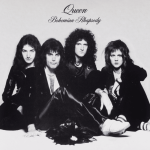Background
“Billie Jean” is one of Michael Jackson’s most iconic songs, featured on his 1982 album Thriller. The song was written and composed by Jackson himself, and it became a defining track of his career. Thriller was produced by Quincy Jones, and “Billie Jean” stood out not only for its infectious beat but also for its compelling storytelling and groundbreaking music video.
The track was recorded and mixed at Westlake Recording Studios in Los Angeles. Michael Jackson, who was already a global superstar from his time with the Jackson 5 and his earlier solo work, was in the process of transforming into a music legend. “Billie Jean” played a significant role in solidifying his status as the “King of Pop.”
Jackson’s meticulous attention to detail and innovative approach to music production helped “Billie Jean” become a cultural phenomenon. The song topped charts worldwide, and its success was instrumental in making Thriller the best-selling album of all time. The music video, with its distinctive dance moves and visual effects, further cemented Jackson’s influence on the music industry and pop culture at large.
Inspiration
The inspiration for “Billie Jean” stemmed from a mix of personal experiences and cautionary tales. Michael Jackson was influenced by letters from fans claiming he was the father of their children, including a particularly distressing incident involving a woman who sent him a gun. Additionally, Jackson drew from stories about groupies and the dangers of fame shared by his brothers. These experiences shaped the narrative of a woman falsely claiming the singer fathered her child.
Writing Process
Michael Jackson wrote “Billie Jean” over several weeks, meticulously crafting both the lyrics and the music. He initially conceived the song’s distinctive bass line while driving his car. Jackson was so absorbed by the melody that he had to keep reminding himself to stay focused on the road.
He worked closely with producer Quincy Jones, who initially had reservations about the song’s length and intro. Jackson, however, insisted on keeping these elements, believing they were integral to the song’s impact. His perseverance paid off, as the bass line, melody, and lyrical narrative came together to form a compelling and cohesive piece. The writing process was marked by Jackson’s determination to perfect every detail, ensuring the song conveyed the right emotion and rhythm.
Production
The production of “Billie Jean” was a meticulous process overseen by Michael Jackson and producer Quincy Jones. The recording took place at Westlake Recording Studios in Los Angeles. Jackson was heavily involved in every aspect, from the arrangement to the final mix.
Engineer Bruce Swedien played a crucial role in capturing the song’s signature sound. Swedien used a unique method to record the bass line, employing a mix of DI (direct input) and a miked amplifier to achieve a punchy yet smooth sound. Jackson and Jones paid close attention to the song’s groove, ensuring it had a tight, infectious rhythm.
One notable aspect of the production was the song’s intro. Jackson insisted on the now-iconic intro, which set the stage for the track’s mood and beat. The production team also used innovative techniques, such as layered vocal tracks and carefully crafted reverb, to create the song’s distinctive sound. The result was a polished, dynamic track that became a cornerstone of the Thriller album.
Music and Arrangement
“Billie Jean” is built on a foundation of a driving bass line and a steady drumbeat, which provide the song’s hypnotic rhythm. The bass line, created by Jackson, is one of the most recognizable in pop music history. The song is in the key of F# minor and features a moderate tempo of 117 beats per minute, giving it a steady, danceable groove.
The arrangement layers various elements to create a rich, textured sound. The song opens with the iconic bass line, accompanied by a subtle drum machine. As the track progresses, layers of synthesizers, strings, and guitar riffs are added, each contributing to the song’s depth and complexity. The keyboard solo, played by Greg Phillinganes, adds a melodic and harmonic richness that enhances the track’s overall feel.
Jackson’s vocal performance is a standout feature of the song. His delivery alternates between a smooth, almost whisper-like tone and powerful, emotive exclamations, conveying the song’s narrative with intensity and emotion. The background vocals, also performed by Jackson, provide harmonic support and add to the song’s haunting atmosphere.
The arrangement is carefully crafted to build tension and release, with each element introduced at just the right moment to maintain listener interest and drive the song forward. This meticulous attention to detail in the music and arrangement helped “Billie Jean” become an enduring classic.
Release and Promotion
“Billie Jean” was released by Epic Records on January 2, 1983, as the second single from Michael Jackson’s Thriller album. The release was strategically timed to follow the success of the album’s lead single, “The Girl Is Mine,” a duet with Paul McCartney.
The promotion of “Billie Jean” was extensive and innovative. The song’s groundbreaking music video, directed by Steve Barron, played a pivotal role in its promotion. The video featured Jackson’s signature moonwalk dance move and showcased his electric stage presence. Premiering on MTV, the “Billie Jean” video helped break racial barriers on the channel and significantly boosted the song’s popularity.
Jackson also performed “Billie Jean” on the television special Motown 25: Yesterday, Today, Forever, where he debuted the moonwalk. This performance became iconic and is often credited with catapulting Jackson into superstardom.
In addition to television appearances, the song received substantial radio play and was supported by print advertisements and promotional materials. The combination of a catchy, well-produced song, a memorable music video, and standout live performances ensured “Billie Jean” received widespread attention and acclaim.
Reception
“Billie Jean” was met with widespread acclaim from both critics and audiences upon its release. The song quickly climbed the charts, reaching number one on the Billboard Hot 100, where it stayed for seven consecutive weeks. It also topped charts in several other countries, including the UK, Canada, and Australia.
Critics praised “Billie Jean” for its innovative production, compelling lyrics, and Michael Jackson’s captivating vocal performance. Many highlighted the song’s bass line and rhythmic groove as standout elements. The song was credited with showcasing Jackson’s talents as a songwriter and performer, further solidifying his reputation as a musical genius.
“Billie Jean” received numerous accolades, including two Grammy Awards in 1984 for Best R&B Vocal Performance, Male, and Best Rhythm & Blues Song. It also won an American Music Award for Favorite Pop/Rock Single.
The music video was equally celebrated, breaking new ground with its visual effects and choreography. It played a crucial role in establishing MTV as a significant platform for promoting music and artists. Jackson’s performance of “Billie Jean” on the Motown 25 special, featuring the debut of the moonwalk, became one of the most iconic moments in television history.
Overall, “Billie Jean” was a commercial and critical triumph, contributing significantly to the success of the Thriller album and solidifying Michael Jackson’s legacy in the music industry.
Impact
“Billie Jean” had a profound and lasting impact on the music industry and popular culture. The song’s success helped propel Thriller to become the best-selling album of all time, solidifying Michael Jackson’s status as a global superstar.
Breaking Racial Barriers
The music video for “Billie Jean” was one of the first by a black artist to receive heavy rotation on MTV. This breakthrough helped pave the way for greater diversity in music video programming and opened doors for other black artists on the platform.
Innovation in Music Video Production
The “Billie Jean” video set new standards for music video production with its innovative special effects and storytelling. The video’s popularity demonstrated the potential of music videos as a powerful promotional tool, influencing the future of the music industry.
Iconic Performances
Michael Jackson’s performance of “Billie Jean” on the Motown 25 television special introduced the world to the moonwalk, a dance move that became synonymous with Jackson and a defining moment in his career. This performance is often cited as one of the greatest in television history.
Influence on Music and Artists
“Billie Jean” influenced countless artists across various genres. Its blend of pop, R&B, and funk elements, combined with its lyrical storytelling, set a new benchmark for contemporary music. Artists and producers have cited “Billie Jean” as an inspiration for its production techniques and innovative approach to music.
Cultural Legacy
The song remains a staple in popular culture, frequently referenced and covered by artists worldwide. Its legacy endures through its continued popularity, with “Billie Jean” being a fixture in Jackson’s discography and a testament to his artistic genius.
“Billie Jean” not only marked a milestone in Michael Jackson’s career but also left an indelible mark on the music industry and popular culture, influencing generations of artists and redefining the possibilities of music and performance.
Conclusion
“Billie Jean” stands as a testament to Michael Jackson’s unparalleled talent and innovative spirit. From its inception to its lasting legacy, the song encapsulates the perfect blend of compelling storytelling, groundbreaking production, and iconic performances. Its success helped to solidify Thriller as the best-selling album of all time and established Jackson as a global icon.
The song’s impact extends far beyond its commercial success. “Billie Jean” broke racial barriers, set new standards for music video production, and introduced the world to the moonwalk, one of the most famous dance moves in history. Its influence is seen in the work of countless artists who followed, and its place in popular culture remains unchallenged.
As a crucial piece of Michael Jackson’s musical legacy, “Billie Jean” continues to captivate new generations of listeners, proving its timeless appeal and enduring significance in the world of music.


















Leave a Reply